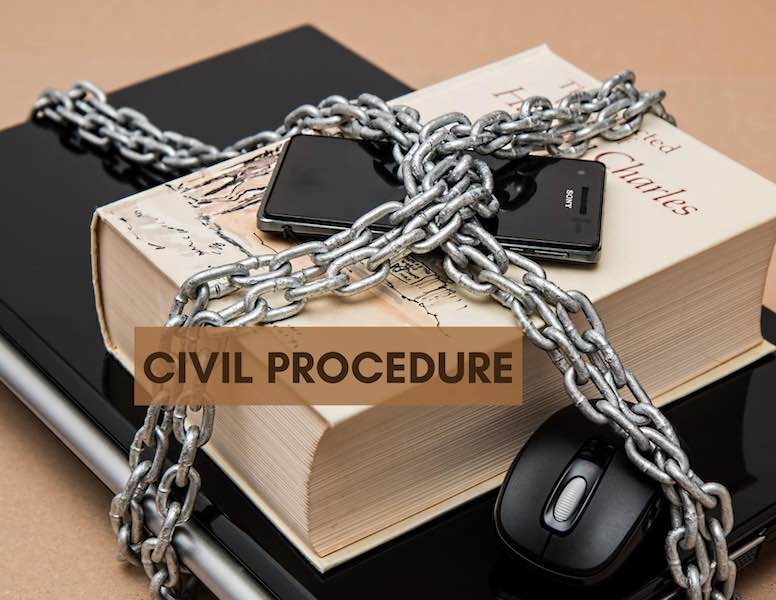Restrictions on The Enforcement of Monetary Judgment during The Twilight Zone
by Nicholas Navaron ~ 29 August 2020

Contributed by:

Nicholas Navaron (Associate)
Tel: 603-6201 5678 / Fax: 603-6203 5678
Email: nnc@thomasphilip.com.my
Website: www.thomasphilip.com.my
You are elated! You managed to enter a judgment against a company to recover millions of dollars. So, now, you are flipping pages, shopping for options to enforce the said judgment – writ of seizure and sale or garnishee proceedings? Then, suddenly, you received an email from your lawyer:
“Dear Sir,
Please be informed that Creditor B has presented a winding up petition against the company (a copy of the winding up petition is attached herein for your reference).
We will revert to you the soonest possible with our views on this.
Thank you.
Regards,
Your lawyers.”
What do you do?
The general rule is that the effects of a winding up petition on the company relate back to the date of the presentation. Some of these effects include the prohibition on any attachment, sequestration, distress or execution against the estate or effects of the company. In this regard, Section 472 of the Companies Act, 2016 (or its predecessor, Section 224 of the Companies Act, 1965) reads:-
“Any attachment, sequestration, distress or execution put in force against the estate or effects of the company after the presentation of the winding up petition shall be void.”
This means that even if you have obtained a monetary judgment against a company, you may not be able to proceed or even continue with the execution of the said judgment after a winding up petition is presented. This renders the said judgment… a ‘paper judgment’.
That seems harsh. Why? The above provision is in place “…to ensure that no creditors, particularly the unsecured creditors, who execute their claims against the company would be enriched at the expense of other unsecured creditors, between the date when the winding-up petition is presented and when the winding-up order is made by the court…” (Siti Norma Yaakob JCA (as Her Ladyship then was) in Kredin Sdn Bhd v Development & Commercial Bank Bhd [1995] 3 MLJ 304).
So, what happens if the winding up petition is withdrawn or struck out?
Would it not be fair of a proposition that the withdrawal or striking out would similarly take effect from the date of the presentation since once withdrawn or struck out, the winding up petition is treated as if it does not exist in the first place?
Is there still any need to protect the creditors when there is no winding up petition in existence, and therefore, no possibility that a winding up order can be granted?
In Labtec Sdn Bhd v Resilient Construction Sdn Bhd [1992] 2 MLJ 853, Datuk Lim Beng Choon J (as His Lordship then was) observed:-
“In any event, the winding-up petition had been set aside on 10 December 1990. Such a setting aside must relate back to the date when the said petition was presented on 31 March 1990. Hence it is futile to suggest at the hearing of the appeal by this court that the SAR had no jurisdiction to grant the garnishee order absolute on the ground that s 224 of the Companies Act 1965 prohibits such an order to be made.”
Indeed, Clement Skinner JC (as His Lordship then was) in Paganelli Sdn Bhd v Care-Me Direct Sales Sdn Bhd [1999] 2 MLJ 464 (“Paganelli case”) held:-
“In my judgment, the preservation of assets argument does not advance the case of the petitioner for a stay because the protection afforded to unsecured creditors by ss 219 and 224 only becomes available where a winding-up petition has been presented against a company and continues to remain in place.
It is important not to overlook the fact that in the Kredin case, the petition to wind-up the company had been presented and was still in place against the company when the respondent bank registered a prohibitory order against five pieces of land belonging to the company to execute a judgment it had obtained.
…
In the application before me, the position that attains at this time when a stay is sought is that there is no petition against the respondent and therefore the question of preferring one creditor over another does not come into consideration and neither does the question of dissipation of assets. It is evident to me that what the petitioner seeks to achieve by obtaining a stay is to be able to take advantage of ss 219(2) and 224 to preserve the assets of the respondent so that in the event the petitioner is finally successful, it will be in a better position to recover its alleged debt. To me, ss 219 and 224 were not enacted to be employed in the manner sought to by the petitioner and neither should a court allow them to be so used.”
In the Paganelli case, the Learned Judge appears to have resorted to a purposive approach in interpreting Section 224 of the Companies Act, 1965. In this regard:-
- Understandably, any party who wants to advocate for the application of Section 472 of the Companies Act, 2016 can argue that the literal meaning of the said provision is clear and not ambiguous – the attachment, sequestration, distress and/or execution are void regardless of whether the winding up petition is subsequently withdrawn or struck out. As such, the Court should not decide as to whether the said provision applies based on the purpose of the said provision. After all, the duty of the Court is to interpret the statutory provision primarily according to its literal meaning, and not according to its purpose, unless there is ambiguity in the literal meaning of the said provision.
- Any party against the application of Section 472 of the Companies Act, 2016, on the other hand, could argue that a purposive approach in interpreting the said provision can be resorted to as the literal meaning may lead to an absurdity (see the Decision of Haidar FCJ (as His Lordship then was) in DYTM Tengku Idris Shah Ibni Sultan Salahuddin Abdul Aziz Shah v Dikim Holdings Sdn Bhd & Anor [2002] 2 MLJ 11). In this regard, it would be absurd to apply the said provision when the question of undue preference does not arise at all (at least arguably).
Further, what prejudice to the company (or its creditors) would there be if the provision ceases to serve its function anymore after the winding up petition has been withdrawn or struck out?
If by a simple presentation of a winding up petition (which is subsequently withdrawn or struck out), any attachment, sequestration, distress and/or execution are void, does it not also mean that a judgment debtor can easily avoid a monetary judgment put in place against it just by procuring a (dummy) creditor to present a (dummy) winding up petition against it, over and over again?
In any event, I believe the commencement or continuance of the execution proceedings should be held in abeyance until after the winding up petition is determined. Otherwise, you will find yourself losing more time and money (in having to re-file your application to enforce your judgment against the judgment debtor) if the winding up petition is subsequently withdrawn or struck out.